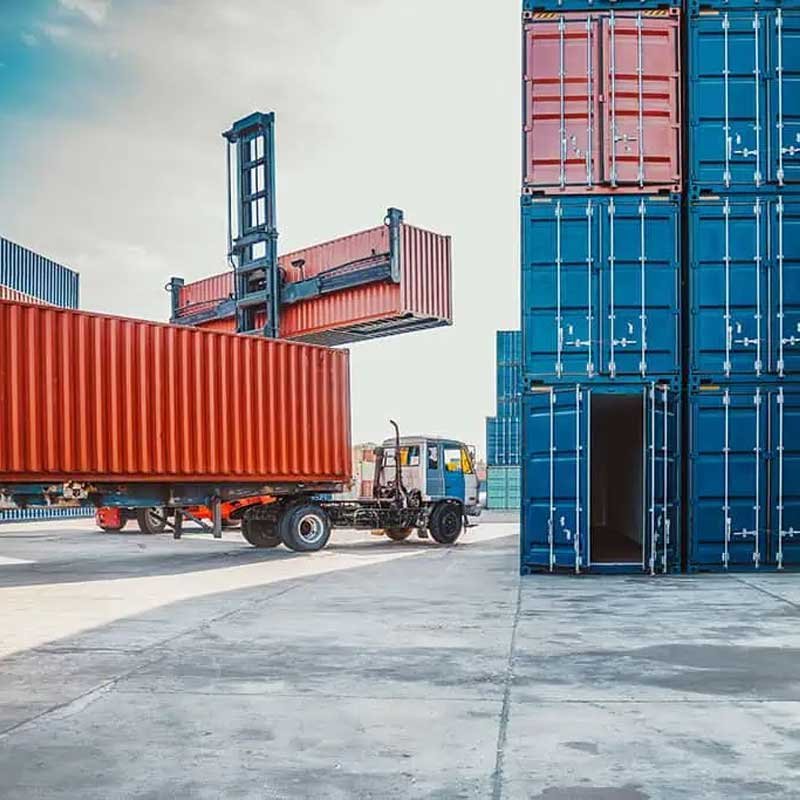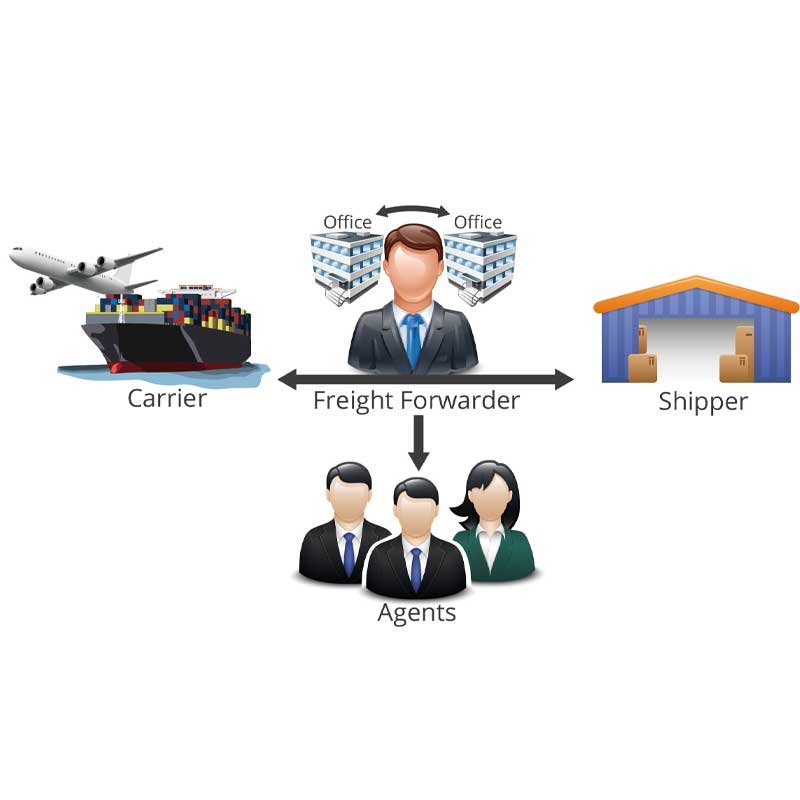In the vast and interconnected landscape of global trade, freight charges stand as the silent engine driving the movement of goods across borders and continents. Yet, behind the simplicity of shipping rates lies a complex web of variables and hidden costs that can significantly impact businesses. Understanding freight charges is not merely about deciphering numbers on an invoice; it’s about unraveling the intricacies of logistics economics and strategic decision-making. In this article, we delve into the world of freight charges, shedding light on the nuances that shape this crucial aspect of modern commerce.
The Basics of Freight Charges
At its core, freight charges encompass the fees associated with transporting goods from one location to another. These charges can vary widely depending on multiple factors, including the mode of transportation (sea, air, rail, or road), distance, weight, volume, and the nature of the cargo. For businesses engaged in international trade, navigating the labyrinth of freight charges requires a deep understanding of the various components involved.
Common Components of Freight Charges
Transportation Costs: This includes the actual cost of moving the cargo from its origin to its destination. Factors such as fuel prices, shipping route efficiency, and carrier rates influence transportation costs.
Handling and Documentation Fees: Beyond the physical movement of goods, freight charges often incorporate fees related to administrative tasks such as customs clearance, documentation processing, and cargo handling at ports or terminals.
Surcharge and Accessorial Fees: Carriers may impose additional charges for services beyond standard transportation, such as fuel surcharges, peak season premiums, detention fees for delayed unloading, and accessorial charges for specialized equipment or services.
Insurance Costs: Protecting cargo against loss, damage, or theft during transit is a critical consideration for shippers. Freight charges may include insurance premiums based on the value and vulnerability of the goods being transported.
Read more: Freight Forwarder Iran, Tehran

The Hidden Costs of freight charges
While some freight charges are readily apparent, others lurk beneath the surface, impacting bottom lines in subtle yet significant ways. These hidden costs can arise from a variety of sources:
Supply Chain Disruptions: Unforeseen events such as natural disasters, geopolitical tensions, or labor strikes can disrupt supply chains, leading to delays, rerouting, and additional expenses for expedited shipping or alternative transportation modes.
Inventory Holding Costs: Lengthy transit times and customs delays tie up capital by prolonging inventory holding periods. Businesses must account for these opportunity costs when evaluating the true impact of freight charges on profitability.
Quality Control and Compliance: Ensuring product quality and regulatory compliance throughout the transportation process requires meticulous attention to detail and investment in quality control measures. Failure to meet standards can result in costly returns, fines, or reputational damage.
Strategies for Managing Freight Charges
In the face of such complexities, businesses must adopt proactive strategies to mitigate the impact of freight charges on their operations:
Negotiate Favorable Terms: Building strong relationships with carriers and logistics providers enables businesses to negotiate competitive rates and favorable contract terms tailored to their specific needs.
Optimize Shipping Routes: Leveraging technology and data analytics, companies can identify optimal shipping routes, modes, and carriers to minimize costs and transit times while maximizing efficiency.
Invest in Supply Chain Visibility: Real-time visibility into the supply chain empowers businesses to proactively identify and address potential disruptions, reducing the likelihood of costly delays and unplanned expenses.
Implement Lean Inventory Practices: Streamlining inventory management processes and adopting just-in-time inventory practices help minimize inventory holding costs and improve cash flow, reducing the financial burden of prolonged transit times.
Read more: Logistic Companies in Iran
Navigating the Impact of Freight Fees
The impact of freight fees extends far beyond the balance sheets of businesses, influencing consumer prices, supply chain resilience, and global economic dynamics. Key considerations for navigating the impact of freight fees include:
Price Elasticity: Businesses must carefully evaluate the price elasticity of their products when factoring in freight fees. In competitive markets where consumers are sensitive to price changes, absorbing higher freight costs may erode profit margins, necessitating strategic pricing adjustments or cost-saving measures elsewhere in the supply chain.
Supply Chain Optimization: Optimizing supply chain efficiency and resilience is paramount for mitigating the impact of freight fees. By leveraging technology, data analytics, and strategic partnerships, businesses can identify opportunities to streamline transportation routes, consolidate shipments, and minimize costly delays or disruptions.
Consumer Behavior: Changes in consumer behavior, such as shifts towards e-commerce or preferences for sustainable products, can influence freight fees and supply chain strategies. Businesses must adapt to evolving consumer trends while balancing cost considerations and operational constraints.
Regulatory Compliance: Regulatory requirements related to customs, trade agreements, environmental standards, and safety regulations can impact freight fees and logistics operations. Staying abreast of regulatory changes and ensuring compliance is essential for avoiding penalties, delays, and reputational risks.

Different Types of Freight Charges
In the dynamic realm of global commerce, freight charges serve as the financial arteries pulsating through supply chains, enabling the movement of goods across borders and continents. However, the landscape of freight charges is far from monolithic, comprising a diverse array of fees and surcharges tailored to the complexities of modern logistics. In this article, we embark on a journey to unravel the intricacies of different types of freight charges, shedding light on their nuances, implications, and strategic significance for businesses worldwide.
Basic Freight Charges
At the core of freight charges lie the fundamental costs associated with transporting goods from point A to point B. These charges encompass expenses related to the physical movement of cargo via various modes of transportation, including sea, air, rail, and road. Factors such as distance, weight, volume, and the nature of the cargo influence basic freight charges, forming the foundation upon which other fees are built.
Accessorial Fees
Beyond the basic transportation costs, accessorial fees encompass a myriad of additional charges levied for specialized services or unforeseen circumstances. Examples of accessorial fees include:
Detention Charges: Incurred when cargo is held at a port, terminal, or warehouse beyond the allotted free time, detention charges compensate carriers for the use of equipment and facilities.
Reefer Fees: Applicable to shipments requiring temperature-controlled transportation, reefer fees cover the additional costs associated with refrigeration or climate-controlled containers.
Liftgate Charges: Imposed for deliveries to locations lacking loading docks or forklifts, liftgate charges reflect the cost of using hydraulic liftgates to unload cargo from trucks.
Inside Delivery Fees: Levied for transporting goods beyond the curbside or loading dock to the interior of a building, inside delivery fees compensate carriers for additional labor and time.
Fuel Surcharges
Fuel surcharges are variable fees designed to offset fluctuations in fuel prices, which can significantly impact transportation costs. These surcharges are calculated as a percentage of the base freight rate and are adjusted periodically in response to changes in fuel prices. By passing on the volatility of fuel costs to shippers, carriers aim to maintain stability and profitability in the face of market fluctuations.
Peak Season Premiums
During periods of heightened demand, such as holidays or peak shipping seasons, carriers may impose peak season premiums to manage capacity constraints and prioritize high-demand shipments. Peak season premiums reflect the increased operational costs and supply chain pressures associated with surges in shipping volumes, providing carriers with a mechanism to balance supply and demand dynamics.
Currency Adjustment Factors (CAF)
In international trade, currency fluctuations can introduce uncertainty and risk into freight pricing. Currency adjustment factors (CAFs) are mechanisms used to mitigate the impact of exchange rate fluctuations on freight charges. By adjusting rates based on prevailing currency exchange rates, carriers seek to stabilize pricing and protect against currency-related losses or gains.
Read more: Container Ships
Conclusion
Freight charges are more than just a line item on a balance sheet; they are a reflection of the intricate web of factors shaping the global economy. By gaining a deeper understanding of the various components and hidden costs associated with freight charges, businesses can navigate this complex landscape with confidence, optimizing their supply chains and driving sustainable growth in an increasingly interconnected world.
FAQs
Freight charges are influenced by a variety of factors including the mode of transportation (sea, air, rail, road), distance traveled, weight and volume of the cargo, as well as the nature of the goods being shipped. Additionally, factors such as fuel prices, carrier rates, route efficiency, and any additional services required, such as customs clearance or special handling, can impact freight charges.
There are several strategies businesses can employ to reduce freight charges. These include optimizing shipping routes to minimize distance traveled, consolidating shipments to take advantage of economies of scale, negotiating favorable rates with carriers, leveraging technology and data analytics to streamline logistics operations, and adopting efficient packaging practices to minimize dimensional weight charges.
Accessorial fees are additional charges levied for specialized services or unforeseen circumstances beyond basic transportation. Examples include detention charges for delays in unloading cargo, reefer fees for temperature-controlled transportation, and liftgate charges for deliveries to locations without loading docks. Accessorial fees can significantly impact overall freight costs and should be carefully considered when evaluating shipping options.
Fuel surcharges are variable fees designed to offset fluctuations in fuel prices, which can significantly impact transportation costs. These surcharges are typically calculated as a percentage of the base freight rate and are adjusted periodically based on changes in fuel prices. Fuel surcharges are applied to help carriers manage the volatility of fuel costs and maintain profitability in the face of market fluctuations.
Yes, there can be hidden costs associated with freight charges that may not be immediately apparent. These can include inventory holding costs due to prolonged transit times, quality control and compliance costs to ensure product integrity and regulatory compliance, as well as supply chain disruptions caused by unforeseen events such as natural disasters or geopolitical tensions. It’s important for businesses to consider these hidden costs when evaluating the true impact of freight charges on their bottom line.









Recent Comments